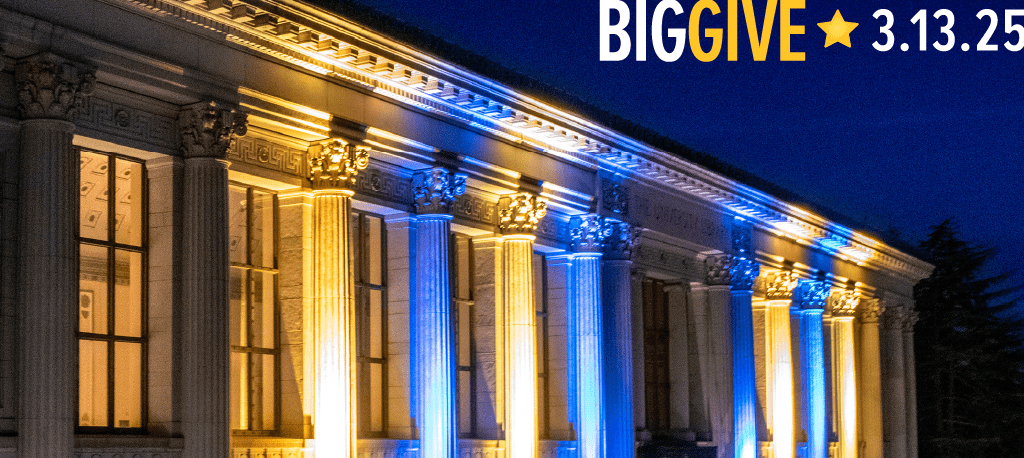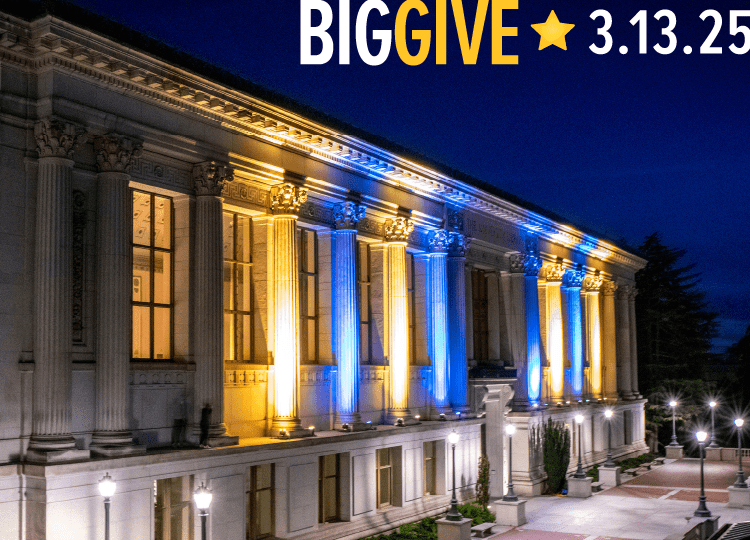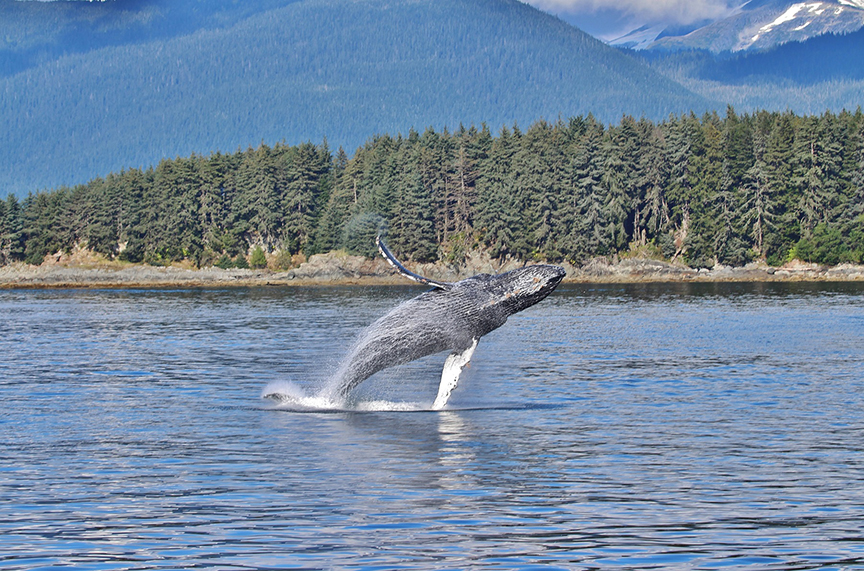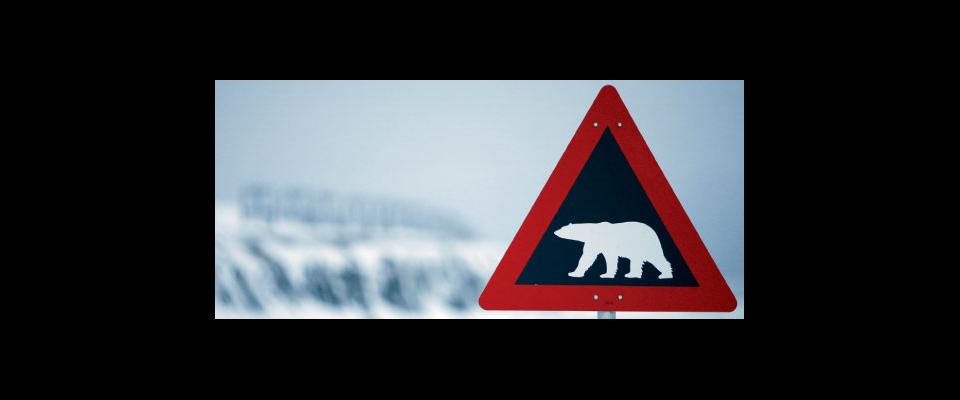The captain of the MS Langøysund is a silent, balding man. Slowly, he steers towards the Nordenskjöld glacier, which stretches blue and still before us. Occasionally he stops the vessel, lets it drift for a while, then glides toward the glacier again at a snail’s pace. Northern fulmars bob along on islands of ice; puffins, with their red beaks, tumble head first into the water; a seal surfaces, looks at us with round, brown eyes, shakes its whiskers in disinterest and shoots away. The ice of the glacier shimmers in the crisp air, and if we listen closely, we can hear it murmur softly. Suddenly, our forward motion ceases. Three weeks earlier a Russian captain had gotten so close to the glacier, a calving section of ice crashed upon the deck, injuring several passengers.
During the return trip to Longyearbyen, I climb up the narrow ladder to the bridge. The captain shows me our location on the charts. Four months a year he takes visitors to see the fjords and sights of Spitsbergen. “And the rest of the time?”
“I … I used to live in northern Norway, 500 miles from here,” he says hesitantly. “Until one day I came home from a trip to find my wife with a strange man.” Since then, he keeps a flat on the mainland but seldom stays there. When he is free, he visits his kids, or friends in the Ukraine who always receive him warmly. “The Ukrainians are so friendly, you have no idea.” He takes my arm and shows me how they hug him and clap him on the shoulders encouragingly when he returns after a long absence. “As if we were family.”
From the deck he had looked to me like a gruff man, but the armor he wears is thin, and he lays it aside eagerly. In this sparsely populated region, the arctic night and the midnight sun draw people together instinctively. “The people of Longyearbyen,” the captain says, laughing, “at the end of the arctic night they put on a big party and everyone dives into bed with the wife of another.”
“Don’t they have any problems with that?” I ask, thinking of the firearms everyone wears to protect themselves against polar bears.
“No, no,” he said. “There’s no one to get in trouble with, because they all do it.”
On the ship, someone had given me a glass of whiskey, but when we arrive back in Longyearbyen I’m cold and think only of the Sauna sign I had seen in the hotel on the stairway to the cellar. It is a roomy sauna with a simple electric heater. On the wooden benches two young men sit across from each other, white towels wrapped around their waists. They glance up briefly as I come in, then continue their conversation in the melodious Norwegian that people speak here.
The sauna has a high window that looks out toward a snowy mountaintop. Recently a girl of 19 was surprised by a polar bear up there; the gun she carried was of no use. The residents of Longyearbyen erected a small monument to her that stands out black against the blue sky.
The man closest to the heater has a tattoo on his left shoulder. Now and then he grabs the bucket at his feet and throws a wave of water in the direction of the stove, after which the three of us listen to the hiss of the glowing stones and inhale the air, which smells of pine. He is an electrician, his friend a mechanic. They both arrived ten years ago. “Some people don’t last a full year,” he says, “but those who stay longer have a tough time leaving.” The mayor of Longyearbyen had said the same thing: He had come for a year, but wound up staying 35. Even for residents, the long arctic night can be hard to bear. The mayor told of a man who was found fishing in his bathtub one winter; after the thaw, when the airport opened again, he was flown to the mainland, because there aren’t any psychiatric hospitals on Spitsbergen.
“And your families,” I ask the two men, “are they also in Longyearbyen?”
“Oh yes! We each have an ex-wife and kids,” says the mechanic, breaking his silence.
“That’s very normal here.” His friend laughs, just like the captain of the Langøysund had when he told me about the party at the end of the arctic night.
Would they go looking for women at night in the hotel bar, I wonder? The place is a dark hole in the wall to the right of the entrance. To the left is a bathroom and a coat rack where a sign reads: “Because the odds of meeting a polar bear in this hotel are low, we kindly request that you place your rifles and revolvers in the gun case. The key is at the reception desk.” Everyone leaves their shoes behind as well—a tradition from the times when there were mines in the center of Longyearbyen and people walked around collecting dust on their soles. The mines have closed in the intervening years, but the custom remains, and so people dine in the chic hotel restaurant without footwear.
The first night in the hotel I had run into a bar patron near the entrance. He was a bit drunk and made a beckoning gesture in my direction, as if to invite me inside. If I were staying longer, I might end up there one evening.
“How long are you here for?” inquires the tattooed man.
“Oh, just a few days.” It is suddenly quiet. “And you,” I ask, “what has kept you here?”
“It’s safe on Spitsbergen,” he says. “In the ten years I’ve lived here I haven’t locked my front door once.” That too appears to be an old custom on the archipelago. If you’re menaced by a bear, it’s handy to be able to dash indoors. “The polar bears were here first,” the man says, grinning. “We’re just guests. We do well not to get in their way.” Recently a bear was seen on the road from the airport to the town center. He was rummaging in a garbage can.
“I don’t even lock my door when I go on vacation,” says the mechanic.
“Our children aren’t in danger here in Longyearbyen,” adds the electrician. “If one of us two is at work and sees the other one’s kids on the street, he stops just to make sure everything is going OK.” He stands and walks to the door. We hear the shower running and when he returns his upper body is glistening with water.
“Everyone works here,” he continues, just as if he had never left the sauna. “If you don’t have a job, Spitsbergen has nothing to offer you, because there is no social welfare.”
Is that why they were here, then, to escape the problems of life on the mainland—was that what drove people to this place? “There are no ethnic tensions in Longyearbyen,” says the mechanic, as if he has guessed my thoughts. “Juvenile delinquency, we don’t have that here.”
His tattooed friend prefers to avoid Oslo on trips to the mainland, but now and then he is required to be in the city. On those occasions, he finds a café with a terrace, orders himself a drink, watches people race past him as in a high-speed film, and thinks how lucky he is to know of a place called Spitsbergen.
He picks up the bucket again, and for the first time I can make out the tattoo on his arm. It’s a polar bear.



















